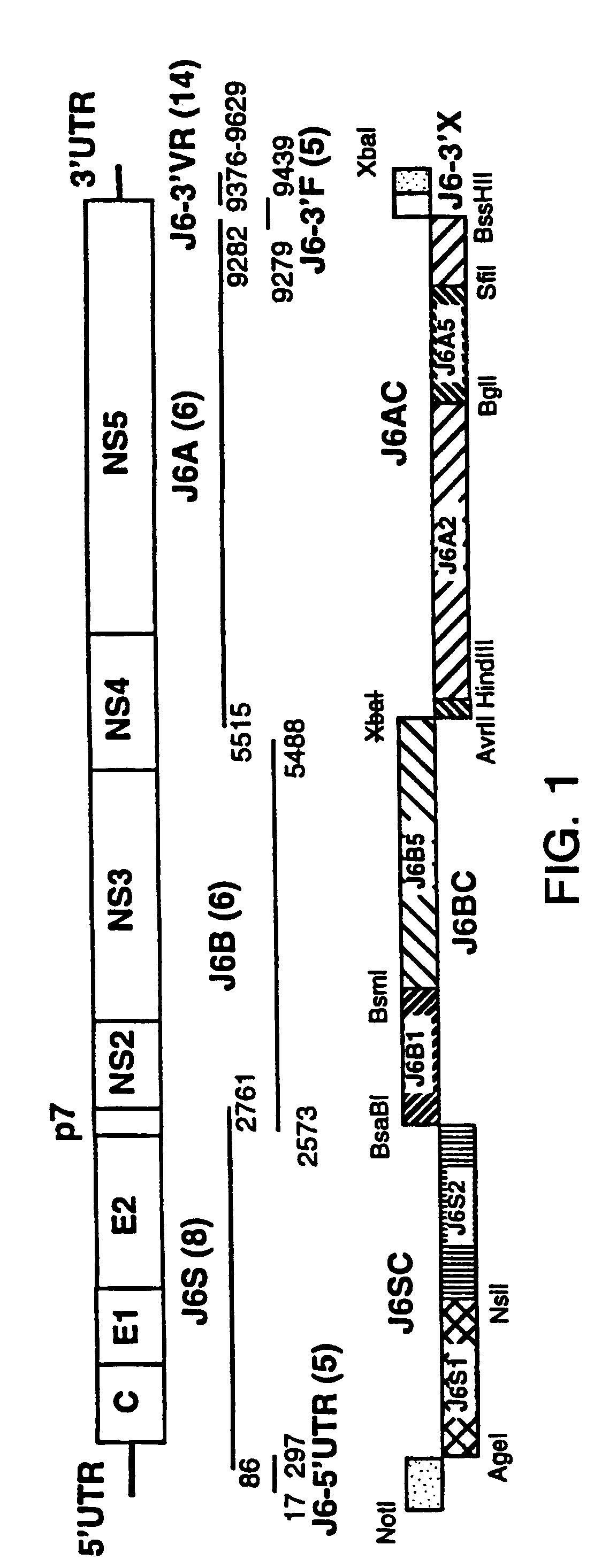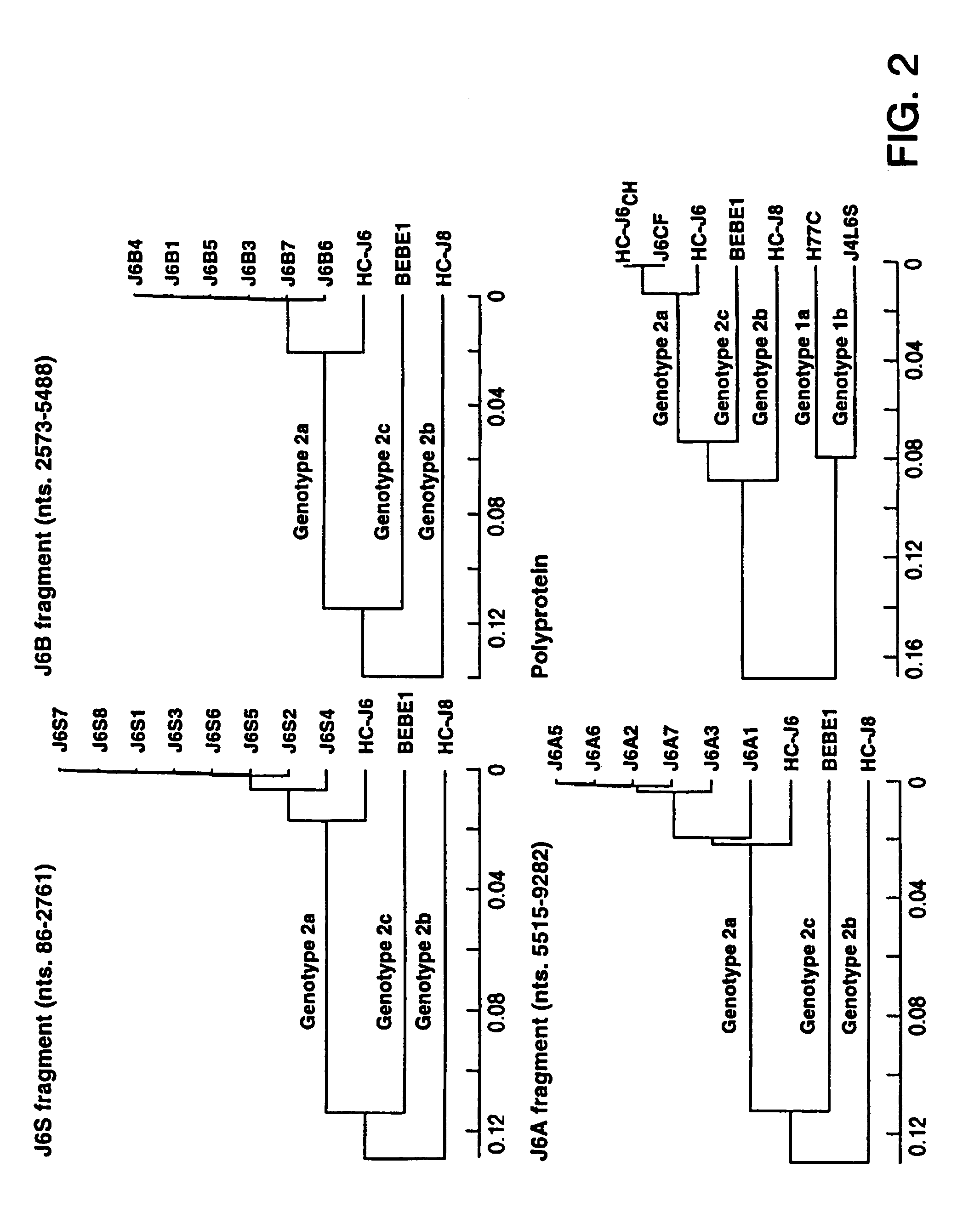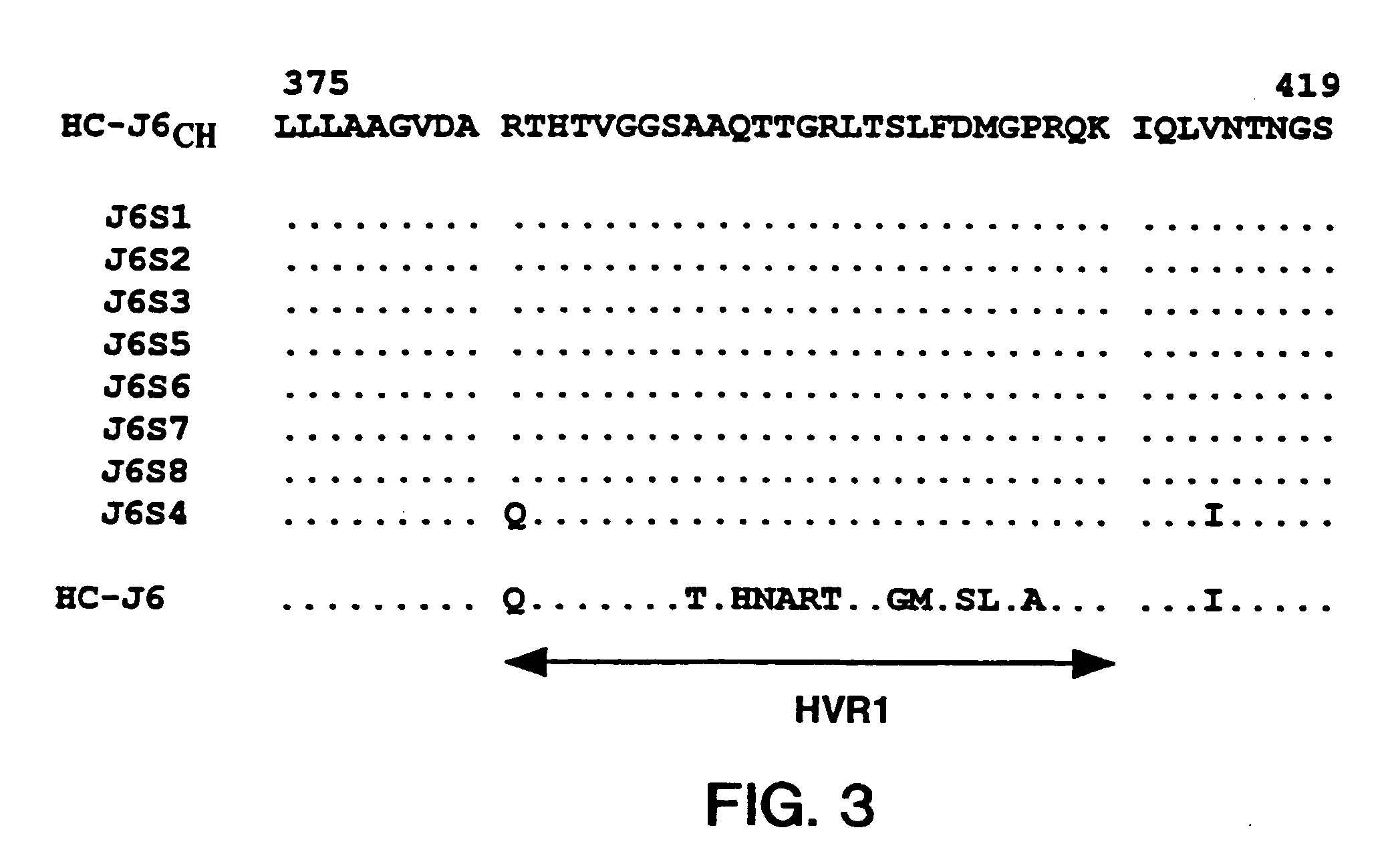Cloned genome of infectious hepatitus C virus of genotype 2A and uses thereof
a technology of infectious hepatitis c virus and cloned genome, which is applied in the field of nucleic acid sequence production, can solve the problems of end-stage liver failure, hcv remains a serious public health problem, and progress has been hindered
- Summary
- Abstract
- Description
- Claims
- Application Information
AI Technical Summary
Benefits of technology
Problems solved by technology
Method used
Image
Examples
example 1
Sequence Analysis of HCV Strain HC-J6CH
[0102]As minor deviations from the consensus amino acid sequence were found previously to render full-length HCV cDNA clones noninfectious (Yanagi et al., 1997, 1998), the consensus sequence of the cloning source of genotype 2a (strain HC-J6CH) was determined prior to constructing any full-length clones. In brief, a plasma pool containing strain HC-J6CH was prepared from acute phase plasmapheresis units collected from a chimpanzee experimentally infected with HC-J6 (Okamoto et al., 1991). The HCV genome titer of this pool was 105.4 genome equivalents (GE) / ml (Quantiplex HCV RNA bDNA 2.0, Chiron) and the infectivity titer was 104 chimpanzee infectious doses / ml.
[0103]The consensus sequence of the 5′ UTR of HC-J6CH (nts. 17–340) was deduced from 5 clones containing nts. 17–297 and 8 clones containing nts. 86–340. The 5′ UTR of the various clones was highly conserved, but the consensus sequence of HC-J6CH differed by 2 nucleotides from that publis...
example 2
Chimeric Molecular Clones
[0108]As chimeric flaviviruses with substituted structural genes have been useful in defining the biological function of viral sequences or proteins, in analyzing immune responses and in generating attenuated vaccine candidates (Bray and Lai, 1991; Chambers et al., 1999; Pletnev et al., 1992, 1993, 1998). The consensus sequence of the 2a structural genes and surrounding region was substituted for that of the infectious 1a cDNA clone. In the genotype 1a backbone, two silent mutations were introduced for cloning purposes [at positions 2765 (p7) and 9158 (NS5B) of pCV-H77C] (FIG. 4). The complete sequence of each chimera was verified. Infectivity of RNA transcripts from four different intertypic chimeric clones (FIGS. 4, 5A, 5B) was evaluated by consecutive intrahepatic transfections of a chimpanzee. Clones were considered not to be viable if viral RNA was not detected in the serum within two weeks of the repeat transfection. All chimeric clones contained the C...
example 3
A Consensus Molecular Clone of Genotype 2a is Infectious In Vivo
[0114]In order to prove that the genotype 2a portion used in the 4 intertypic chimeric cDNA clones indeed represented the infectious sequence, a consensus full-length cDNA clone of HC-J6CH(pJ6CF) was constructed. The core sequence of the T7 promoter, a 5′ guanosine residue and the full-length sequence of HC-J6CH(9711 nts) were cloned into pGEM-9Zf vector using NotI / XbaI sites. Within the HCV sequence there were no deduced amino acid differences and only 4 nucleotide differences (at nucleotide positions 1822, 5494, 9247 and 9289) from the consensus sequence of HC-J6CH as determined in the present study. The silent mutation at position 1822 was within the structural region and so was also present in the four intertypic chimeras. The 5′ terminal 16 nts and the 3′ terminal 82 nts were deduced from previously published HCV genotype 2a sequences (Okamoto et al., 1991, Tanaka et al., 1996). The full-length cDNA clone of genoty...
PUM
| Property | Measurement | Unit |
|---|---|---|
| time | aaaaa | aaaaa |
| volumes | aaaaa | aaaaa |
| nucleic acid | aaaaa | aaaaa |
Abstract
Description
Claims
Application Information
 Login to View More
Login to View More - R&D
- Intellectual Property
- Life Sciences
- Materials
- Tech Scout
- Unparalleled Data Quality
- Higher Quality Content
- 60% Fewer Hallucinations
Browse by: Latest US Patents, China's latest patents, Technical Efficacy Thesaurus, Application Domain, Technology Topic, Popular Technical Reports.
© 2025 PatSnap. All rights reserved.Legal|Privacy policy|Modern Slavery Act Transparency Statement|Sitemap|About US| Contact US: help@patsnap.com



